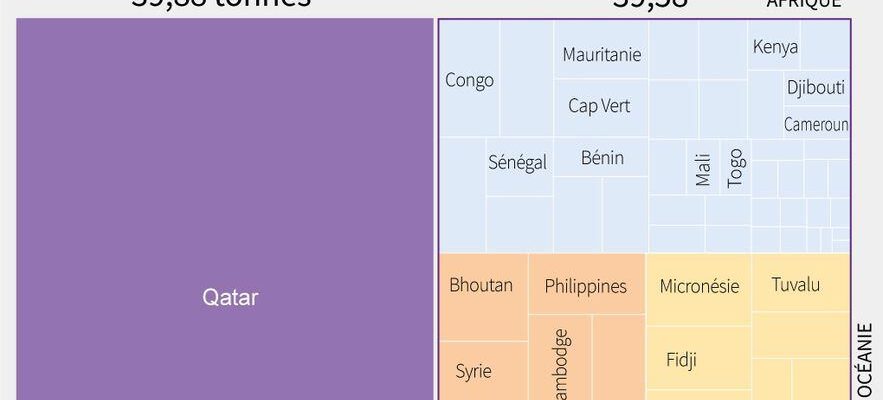The finding is once again alarming. It is “now inevitable” that the threshold of 1.5°C of global warming will be exceeded “constantly over several years” and there is a one in two chance that this will happen in just seven years, warned Tuesday scientists from the Global Carbon Project, who are calling for action.
According to this baseline study presented at the UN climate meeting in Dubai, CO2 emissions produced by the use of coal, gas and oil around the world for heating, lighting or driving are expected to increase. indeed break a new record in 2023.
Measurements too slow
In 2015, with the Paris Agreement treaty, world leaders set themselves the objective of not exceeding the threshold of +1.5°C to avoid repeated heat waves and profound changes, even irreversible, inflicted on nature by human action.
“Leaders meeting at COP28 will need to agree on rapid reductions in fossil fuel emissions, even to maintain the 2°C target,” says British climate scientist Pierre Friedlingstein, who supervised the study involving 150 researchers from around the world.
However, “measures aimed at reducing carbon emissions from fossil fuels remain terribly slow,” criticizes the scientist. “The time remaining between now and the threshold of +1.5°C is shrinking at full speed, we must act now,” he added. Last year, these scientists estimated that this critical level of rise of 1.5°C would be effective in nine years.
Carbon footprint per capita: glaring disparities
© / afp.com/Olivia BUGAULT, Sabrina BLANCHARD, Laurence SAUBADU
Four times more than in 1960
In detail, the study estimates that total global carbon dioxide emissions added to the atmosphere in 2023 will reach 40.9 billion tonnes (GtCO2). This is four times more than in 1960, and the emissions curve, instead of reducing, is on a plateau over ten years, the researchers point out.
Deforestation, particularly in Brazil, the Democratic Republic of Congo and Indonesia, plays a role but it remains minimal compared to the use of fossil fuels and cement which remains out of control, with 36.8 GtCO2 (+1.1% compared to 2022).
In 26 countries, representing 28% of global emissions, there has been an effort to reduce emissions linked to fossil fuels (-7.4% in the European Union, -3% in the United States) but that is not enough , says the study. The resumption of international air transport has caused emissions from this sector to jump by 28.2% this year, after already two years of catching up, underlines the study.
Polluter No. 1, coal remains widely used and emissions linked to it are expected to increase further this year (+1.1%). Its use has increased, particularly in China and India but also elsewhere in the world. It has fallen sharply in the European Union, and in the United States, which nevertheless replaces it with gas. Same thing with oil (32% of global emissions compared to 41% for coal), whose emissions are expected to increase in 2023 (+1.5%) driven by China and India, compared to a slight decrease elsewhere. For gas, the trend is the same (+0.5%), just as for cement (+0.8%).
Boom of broadcasts in India
The main greenhouse gas, carbon dioxide emitted when we burn gas, oil or coal or when we build, takes decades to dissipate. Its accumulation is the main cause of global warming.
A major user of coal-fired power plants to meet the growth in electricity demand, India has been the 3rd largest emitter in the world since 2022, far behind China and the United States, but ahead of the European Union. Its emissions are expected to increase by more than 8% this year compared to 2022, more than in China (+4%).
Relative to the number of inhabitants – India this year became the most populous country in the world, with 1.425 billion inhabitants – Indian emissions are however seven times lower than those of the Americans, and three times lower than those of the Europeans, the study indicates. “If everyone starts emitting as much as an American, we are not going to get out of it” and we will go “towards 4°C of warming”, observes the French physicist Philippe Ciais.
2024 is already shaping up to be a dark year for global warming, with the rise of the El Niño climate phenomenon over the Pacific which risks harming vegetation, which humanity needs to absorb part of carbon emissions. .
